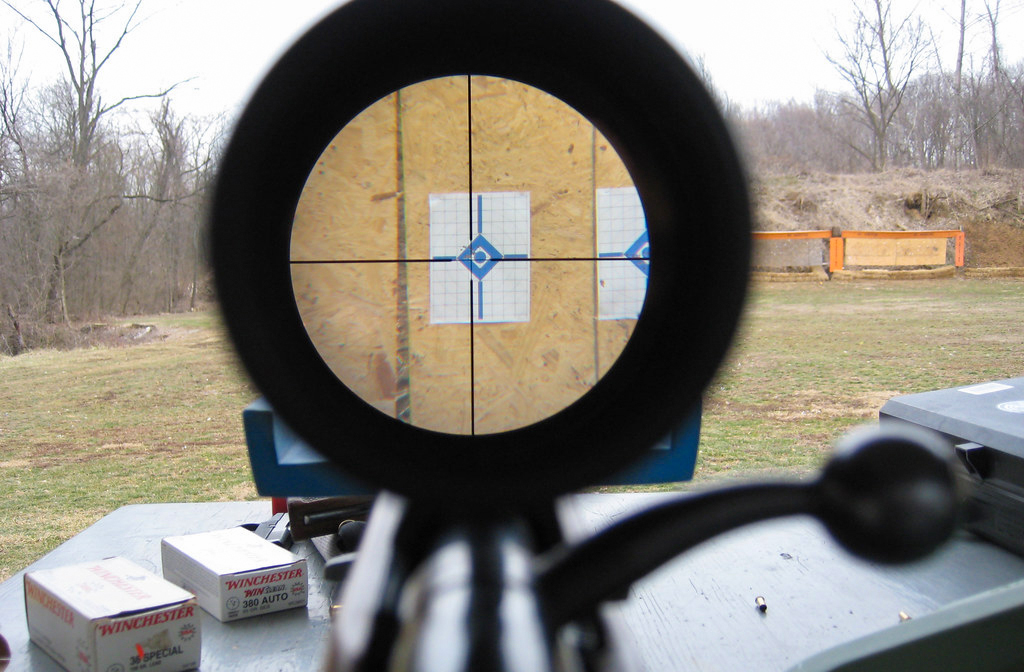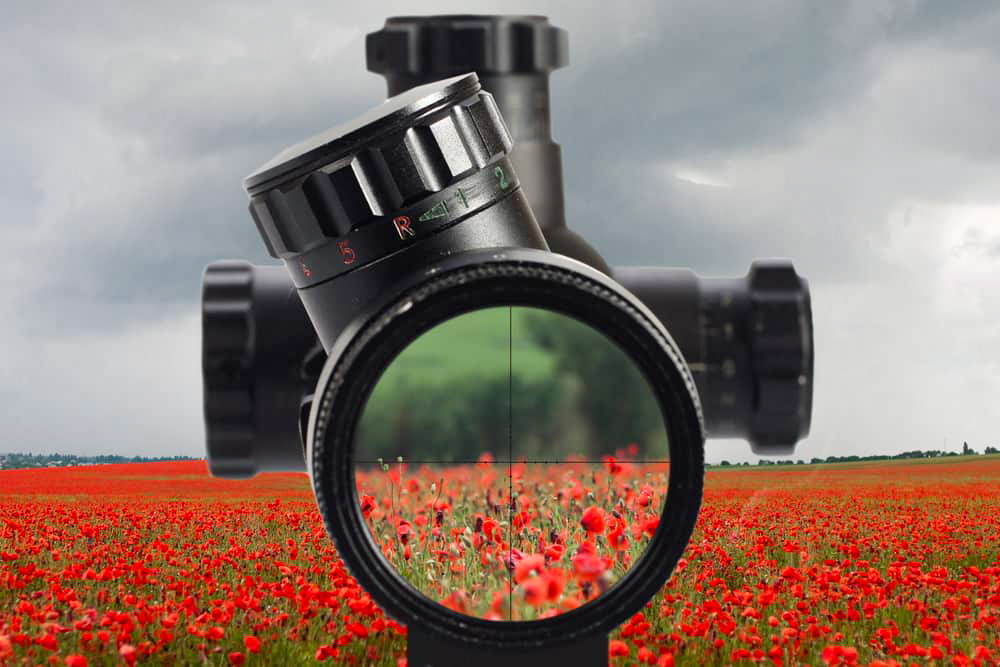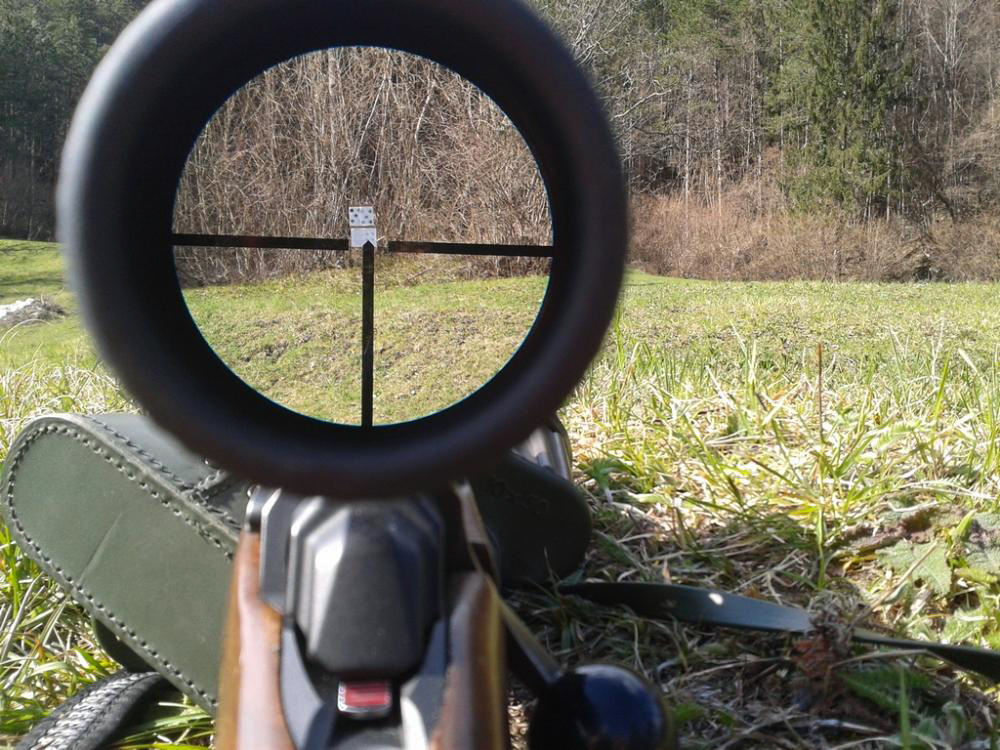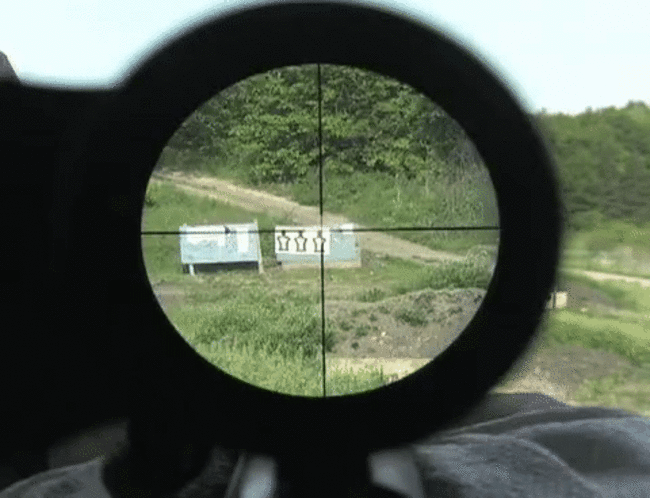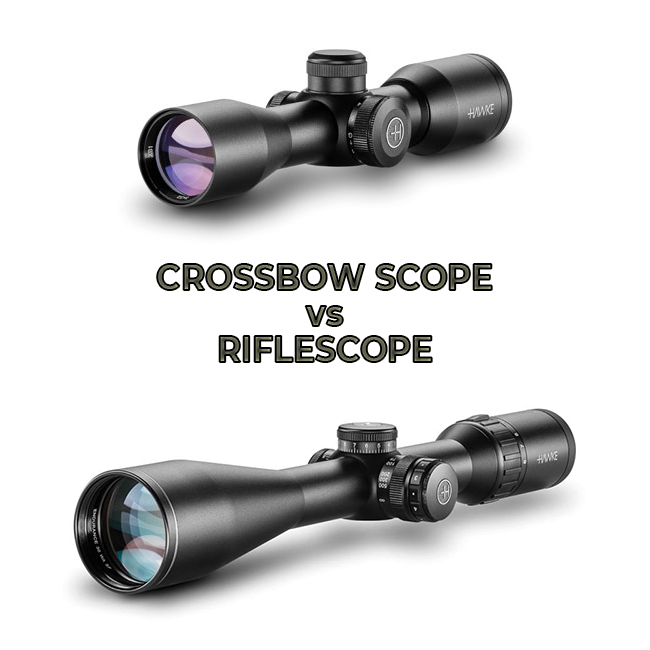If you think you know everything about the scope magnification, think again! Scopes have a lot going on on the inside and outside with numbers, letters, and components.
So before you enter the market to find the proper scope for your weapon, you must understand how to make sense of the numbers and letters written on it.
Contents
What’s Scope Magnification
The most important physical property of a scope is its magnification. It is defined by the diameter, curvature, material, and thickness of the lenses used on a scope.
To find out the optical properties of the scope, one has to know all the physical properties of the lenses and the coatings that go on them.
The lenses in a scope perform three magnification purposes:
- Magnification of the target
- Inverting the magnified target
- Focusing the magnified image
A scope’s magnification defines its ability to carry out the three primary purposes mentioned above—the greater the magnification, the better the scope’s performance.
What Do the Numbers Mean?
The numbers on a scope tell us about its power and the diameter of the objective lens. For example, a 4-12×60 scope means the scope has a variable power of 4x to 12x.
This means the image you see through this scope can appear four times closer than it does with the naked eye. Or it will appear twelve times closer than it does with the naked eye.
How close the image appears within the 4x to 12x range depends on the setting you have chosen on the scope.
On the other hand, the 60 is the diameter of the objective lens in millimeters. If this scope was fixed scope with power four and an objective lens diameter of 60, you would see the numbers as 4×60.
This means that the image will always appear four times closer since you can’t change the settings. At the same time, the objective lens diameter is 60mm, the same as the variable scope.
What Do the Letters Mean?
Depending on the specification, type, or scope model, you might also see some letters on the box.
The letters won’t mean anything to you unless you know what they stand for. In most cases, these letters simply represent the scope model if they are found before or after the name.
However, if the letters are seen right before or right after the magnification or objective lens number, they can indicate a vital piece of information.
Let’s have a look at a list of letters found on scopes and what they stand for:
- AO: Adjustable Objective, helps with parallax adjustment
- FFP: First Focal Plane, indication for reticle’s location
- SFP Second Focal Plane, indication for reticle’s location
- MOA: Minute Of Angle, a scope that uses inches and yards for crosshairs
- FOV: Field of View indicates the amount of area you can see through a scope
- IER: Intermediate Eye Relief, scopes with extended eye relief
- EER: Extended Eye Relief, scopes with extra extended eye relief
Different Scope Magnification Types
Now that you know the basics about scopes, it is also essential to know the different scope magnification types.
There are mainly two types of scope magnifications: fixed magnification range and variable magnification range. They commonly go by the names fixed scopes and variable scopes.
Fixed scopes have fixed magnification power, and variable scopes have variable magnification power.
Variable scopes are also commonly known as variable power scopes, so don’t get confused.
When you are out shopping for a crossbow scope, you must know which type you need. Depending on your hunting environment, conditions, game, and other factors, you can get either.
You can also get both in case you are frequently hunting in different hunting conditions. However, most professional hunters choose either type and stick to it for better performance and accuracy.
Fixed Scopes
Fixed scopes or fixed power scopes have fixed magnification. This means you cannot change the magnification on a fixed power scope.
For example, 4×30 is a fixed scope with a magnification power of 4x. The 30 here denotes the diameter of the objective lens.
Many professional hunters prefer a fixed power scope as it is more reliable. The reliability here is achieved because all the settings a preset.
However, there are certain limitations of a fixed power scope. For instance, if you are in a situation where you need to change the power settings, you won’t be able to.
At the same time, a fixed power scope offers a quick response as well as a clearer and brighter image of the target.
Variable Scopes
A variable scope, as the name suggests, has variable power. For example, a variable scope with the number 3-9×40 has a magnification power range of 3x to 9x.
This means you can change the magnification power according to your need between 3x to 9x. The 40 here denotes the diameter of the objective lens.
Variable power scopes are suitable in situations where you constantly need to change the magnification power.
However, professional hunters believe they are not as reliable since you have to change the settings. This can take some time as well getting used to.
In addition, the compromised reliability does offer the benefit of a flexible scope power.
What Are Objective Lens?
The objective lens is located at the front of the scope. It is responsible for gathering the light that enters the scope.
As a result, the bigger the diameter of the objective lens, the more light it gathers. Hence, more light enters the scope through an objective lens that has a greater diameter.
Due to this, you get a larger exit pupil and a brighter and clear image of the target.
The most common numbers for the objective lens diameter are 32mm, 38mm, 40mm, 44mm, and 50mm.
You will find most scopes on the market with these sizes of the objective lens. You can make a choice based on your need and hunting conditions.
Rifle vs. Crossbow Scope Magnification
There is a stark difference between the designs of crossbow scopes and rifle scopes.
This difference mainly exists due to differences between the shooting range of crossbows and rifles. Rifles are designed to shoot targets at longer ranges as compared to crossbows.
Accordingly, crossbow scopes are designed for shorter ranges as compared to rifle scopes.
You cannot use rifle and crossbow scopes interchangeably because crossbow scopes are designed for short ranges of 20-50 yards.
On the other hand, rifle scopes are designed for longer ranges which usually are 100 yards or more.
Similar is the case with scope power. Crossbow scopes have lower power as compared to rifle scopes.
In most cases, crossbow scopes are only available with a low-powered fixed magnification due to their limited shooting range.
Riflescopes, on the other hand, are available with high variable powers due to long shooting ranges.
Generally, crossbow scope powers are ranged between 1x to 4x. In contrast, rifle scope powers are normally in the 3x to 9x power range.
Common Scope Magnifications
You can find a variety of scope magnifications on the market. However, some common scope magnifications pop up a lot.
These are popular or preferred by hunters because of their performance in certain hunting conditions.
I will help you understand what each scope magnification means and how you can determine which is suitable for which hunting weapon.
What Does 4×32 Scope Magnification Mean?
The first thing you should notice when you read the numbers 4×32 is that it is a fixed scope. This means that you can’t change the magnification power on this scope.
As a result, the 4x power means that the image/object will appear four times closer than it does with the naked eye.
The 32 is again the size of the diameter of the objective lens. This is relatively small and determines the amount of light that enters the scope.
These numbers tell us that the scope is suitable for a crossbow given the fixed 4x magnification.
What Does 3-9×40 Scope Magnification Mean?
The 3-9×40 scope magnification means this is variable scope. It has a magnification range of 3x to 9x.
You can change the magnification settings to anything between 3x to 9x to see the image/object closer than the naked eye.
The 40 denotes the size of the diameter of the objective lens. It means that this scope produces a brighter and clearer image as compared to the previous scope with a 32mm objective lens diameter.
Moreover, the magnification range tells us that this scope is suitable for a rifle, given the long-range shooting it can cater to.
What Does 6-24×50 Scope Magnification Mean?
This again is a variable power scope. Since the magnification power range is 6x to 24x, this can be considered a heavy-duty, powerful scope.
This scope magnification is suitable for long-range shooting rifles. You can change the magnification settings to any number between 6 and 24.
The objective lens diameter on this scope is 50mm, greater than the previous two scopes.
As a result, the image produced by this scope will be brighter and clearer than the previous two as more light enters the scope.
However, you must consider that the higher the magnification power you use, the greater the amount of light you need to see the target more clearly.
This explains why there is a bigger objective lens in this scope.

Hi, my name is Michael Goodman. As a skilled hunter and a man of the field, I will show you some sophisticated, intelligent, and useful hunting methods and techniques.

